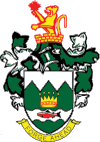Nelson, BC
| Nelson | |||
|---|---|---|---|
| City | |||
| The Corporation of the City of Nelson | |||

Historic Baker Street
|
|||
|
|||
| Nickname(s): The Queen City | |||
| Motto: "Forge Ahead" | |||
| Location of City of Nelson within British Columbia, Canada | |||
| Coordinates: 49°30′0″N 117°17′0″W / 49.50000°N 117.28333°WCoordinates: 49°30′0″N 117°17′0″W / 49.50000°N 117.28333°W | |||
| Country | Canada | ||
| Province | British Columbia | ||
| Regional District | Central Kootenay | ||
| Incorporated | 1897 | ||
| Government | |||
| • Type | Elected city council | ||
| • Mayor | Deb Kozak | ||
| • Governing body | Nelson City Council | ||
| • MP | Wayne Stetski (NDP) | ||
| • MLA | Michelle Mungall (BC NDP) | ||
| Area | |||
| • Land | 11.93 km2 (4.61 sq mi) | ||
| Elevation | 535 m (1,755 ft) | ||
| Population (2011) | |||
| • Total | 10,230 | ||
| • Density | 857.7/km2 (2,221/sq mi) | ||
| Time zone | PST (UTC−8) | ||
| • Summer (DST) | PDT (UTC−7) | ||
| Postal code span | V1L | ||
| Area code(s) | 250 / 778 / 236 | ||
| Highways |
|
||
| Website | nelson.ca | ||
Nelson is a city located in the Selkirk Mountains on the extreme West Arm of Kootenay Lake in the Southern Interior of British Columbia, Canada. Known as "The Queen City", and acknowledged for its impressive collection of restored heritage buildings from its glory days in a regional silver rush, Nelson is one of the three cities forming the commercial and population core of the West Kootenay region, the others being Castlegar and Trail. The city is the seat of the Regional District of Central Kootenay. It is represented in the provincial legislature by the riding of Nelson-Creston, and in the Parliament of Canada by the riding of Kootenay—Columbia.
The West Kootenay region of British Columbia, where the city of Nelson is situated, is part of the traditional territories of the Sinixt (or Lakes) and Ktunaxa (Kutenai) peoples.
Gold and silver were found in the area in 1867. Following the discovery of silver at nearby Toad Mountain in 1886, the town boomed quickly, leading to incorporation in 1897. Two railways were built to pass through Nelson. Due to its location near transportation corridors, Nelson grew to supply the local mining activity and soon became a transportation and distribution centre for the region.
The town soon matured from a false-fronted boom town to a sophisticated city.Francis Rattenbury, an architect most noted in British Columbia for the Parliament Buildings in Victoria, the Vancouver Provincial Courthouse, and the second Hotel Vancouver, designed chateau-style civic buildings made of granite, which stand today. By the 1900s, Nelson boasted several fine hotels, a Hudson's Bay Company store and an electric streetcar system. The local forestry and mining industries were well established.
...
Wikipedia



